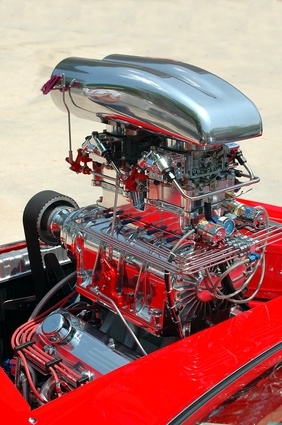
A turbo, or turbocharger, refers to a gas compressor device designed to increase the air pressure that enters an internal combustion engine, thereby increasing engine power. Turbo bypass valves help control the added air pressure necessary to operate the turbocharger.
During turbo boost, which sends air into the engine, the throttle plate opens, enabling fuel and pressure to flow through the intake valves. Once the engine decelerates, the throttle plate shuts. The stream of air hitting the plate can form a shock wave capable of rebounding through the induction tubing and sending a pressure spike through the turbocharger's turbine, stalling the propeller and wearing out the turbo bearings. The bypass valve prevents this from happening.
The turbo bypass valve is comprised of a diaphragm made of plastic with a set of ports attached to the intake hosing of the turbocharger and the intake tube for the throttle plate. A vacuum line attaches to the bypass valve line which, when vacuum flows through it, causes the diaphragm to open a hole between the ports. This passageway enables air flow from the throttle plate back to the turbocharger impeller, preventing the formation of a shock wave.
Turbo bypass valves are often referred to as "hooter" valves due to the hooting noise usually heard when air passes through the diaphragm.